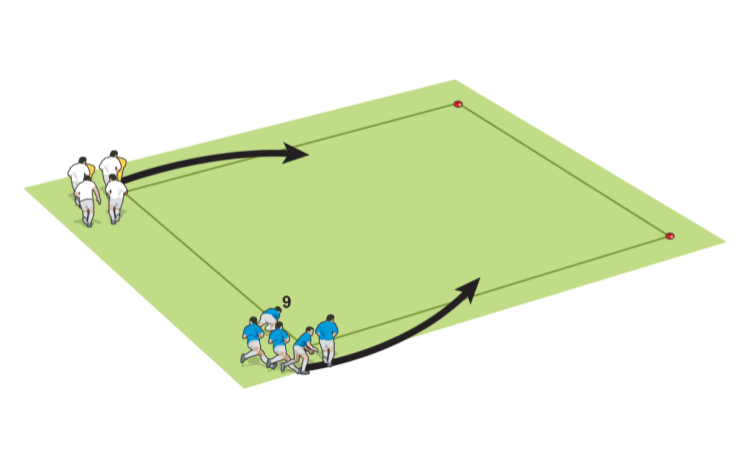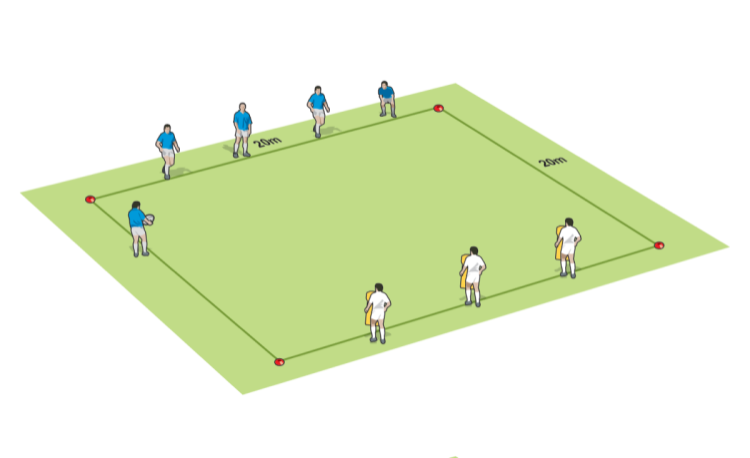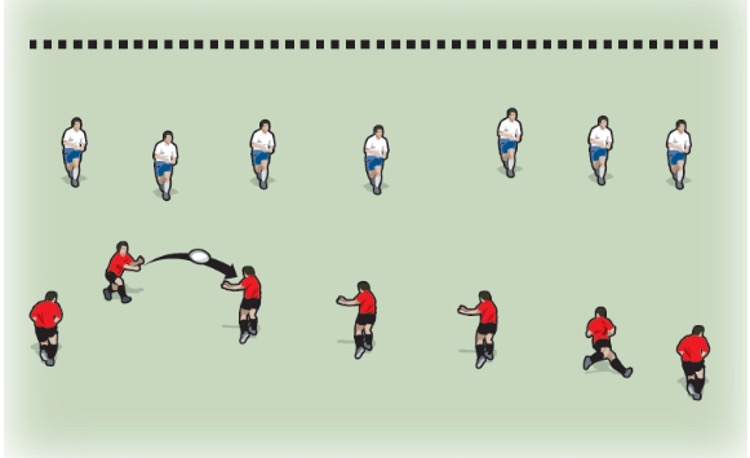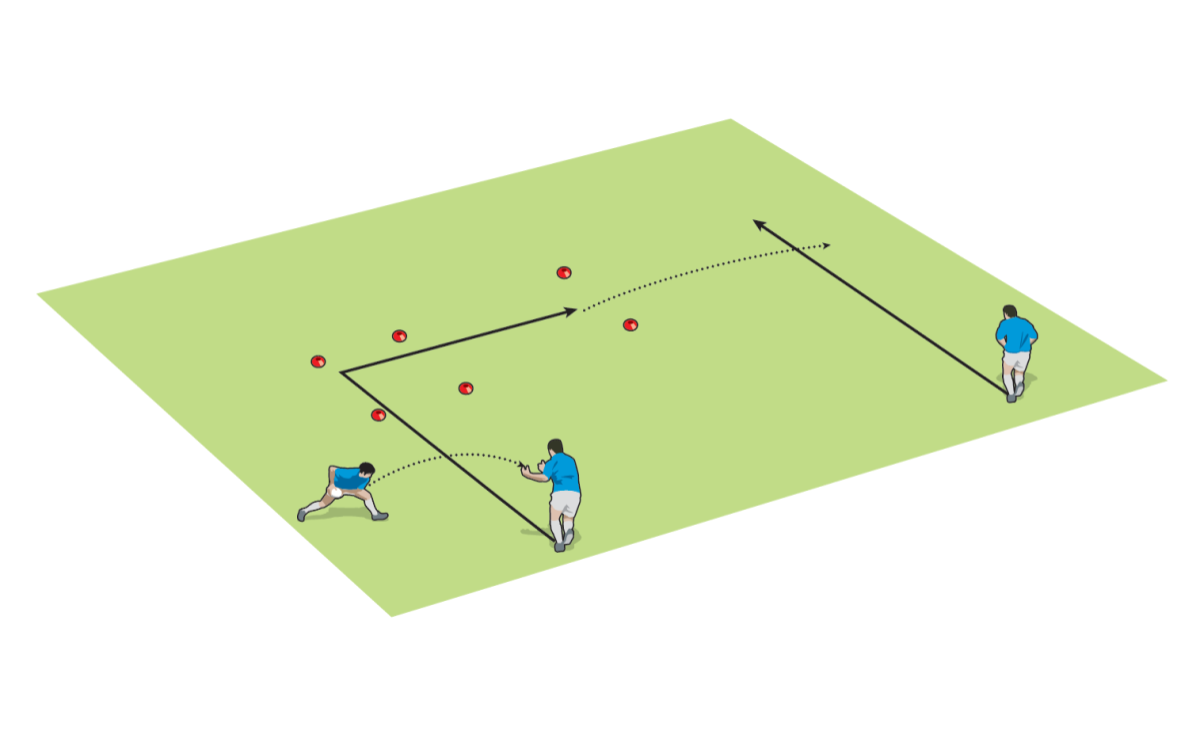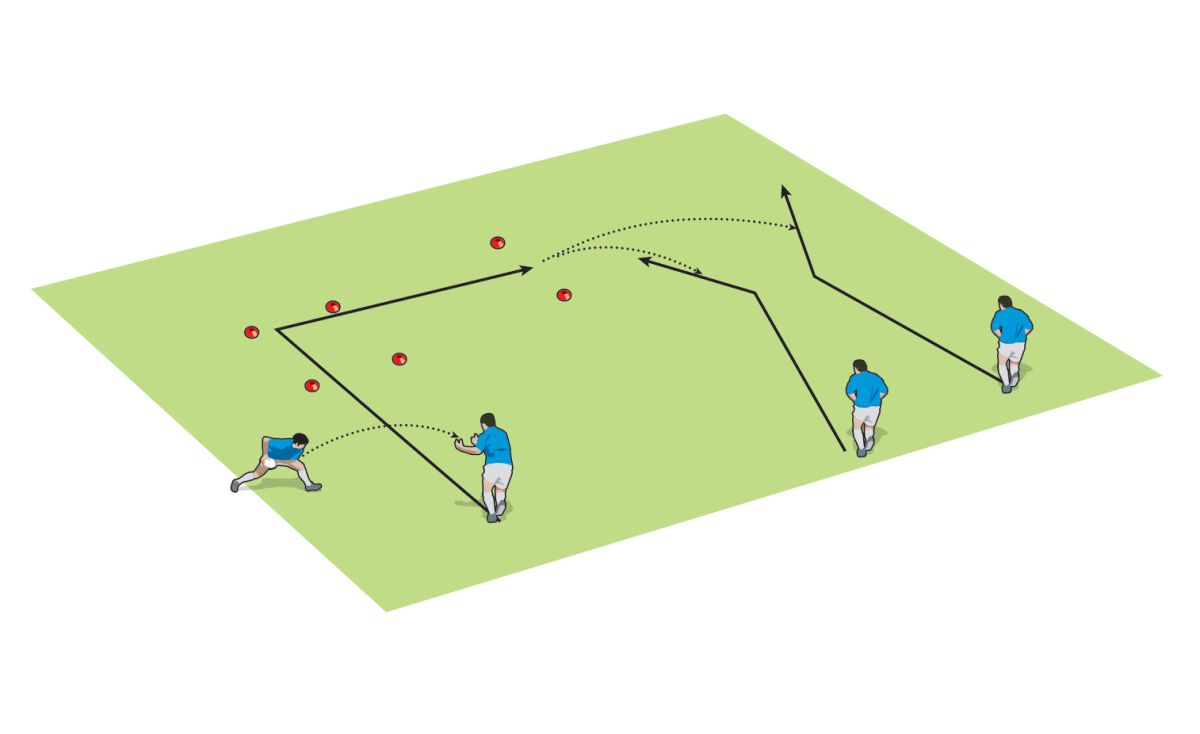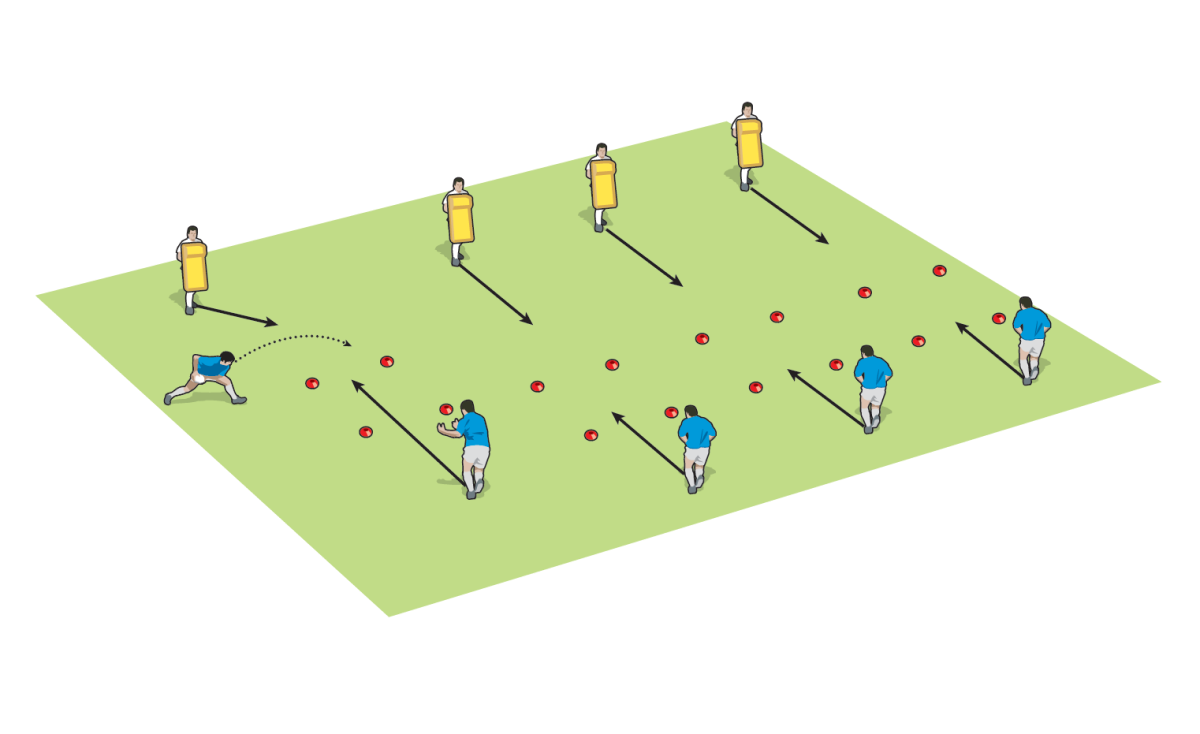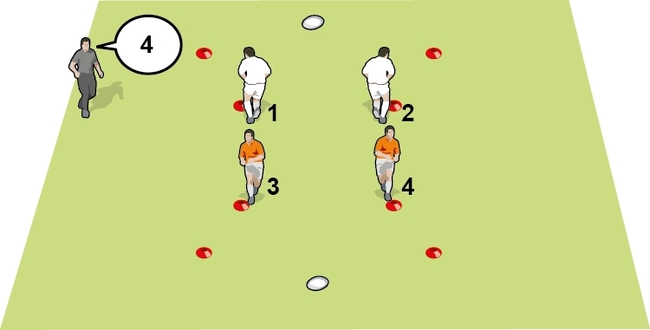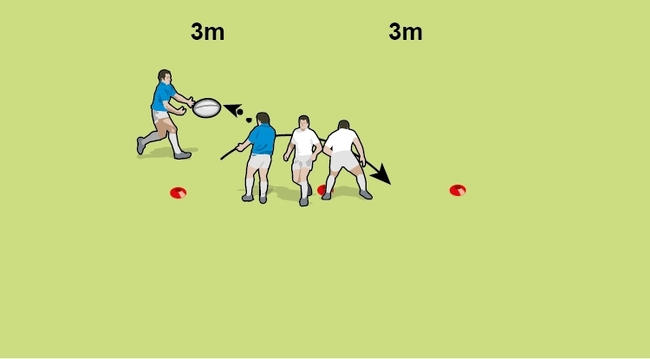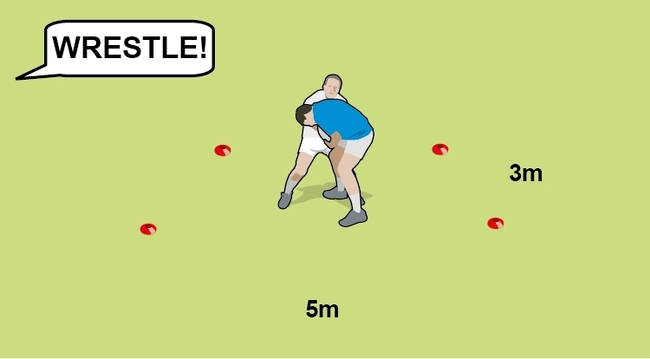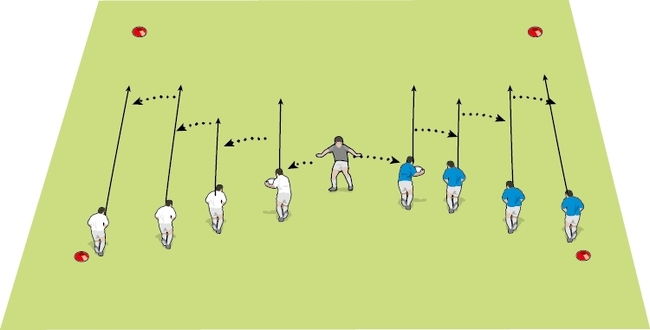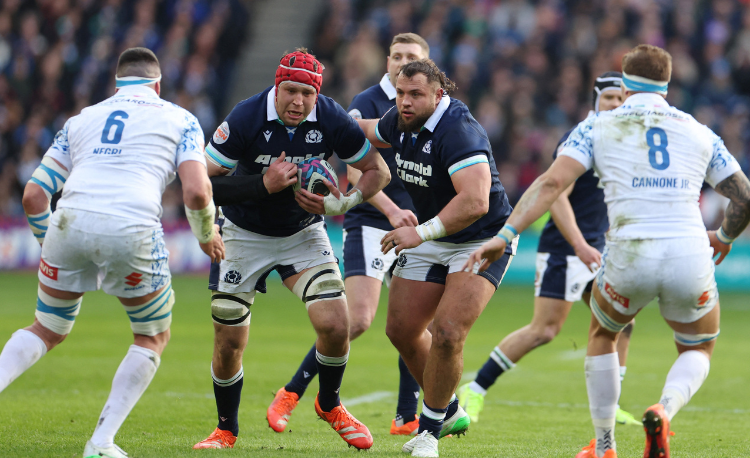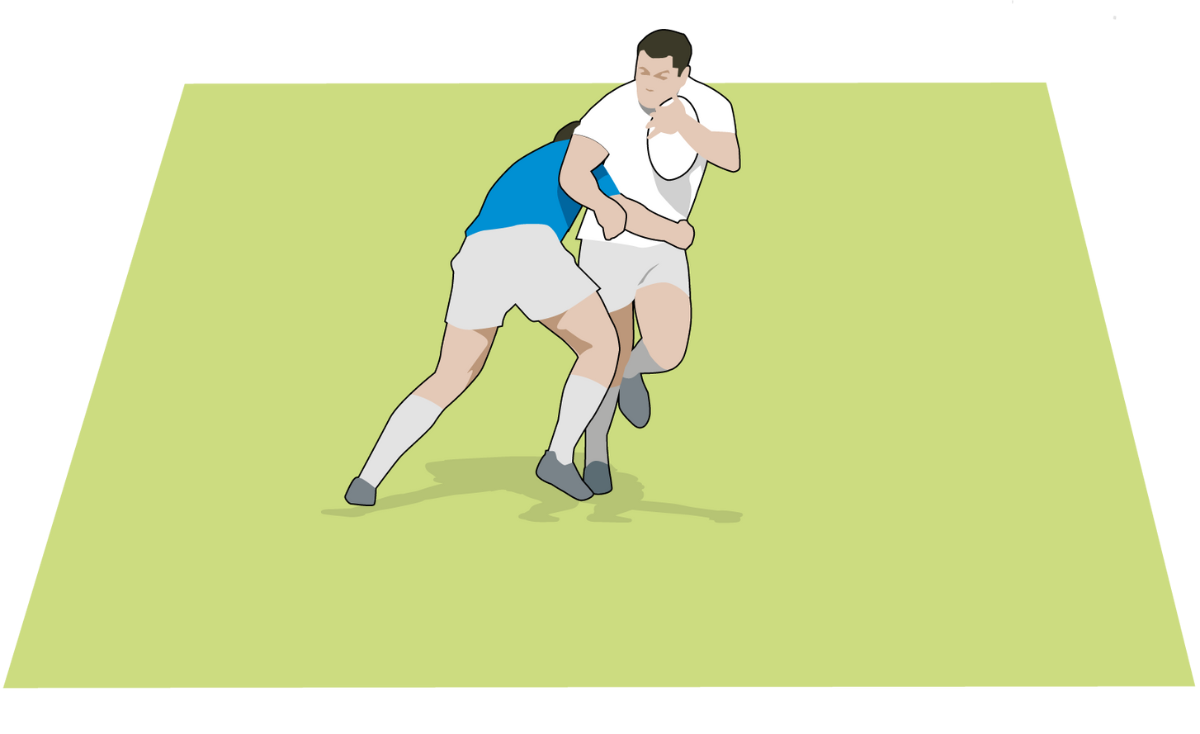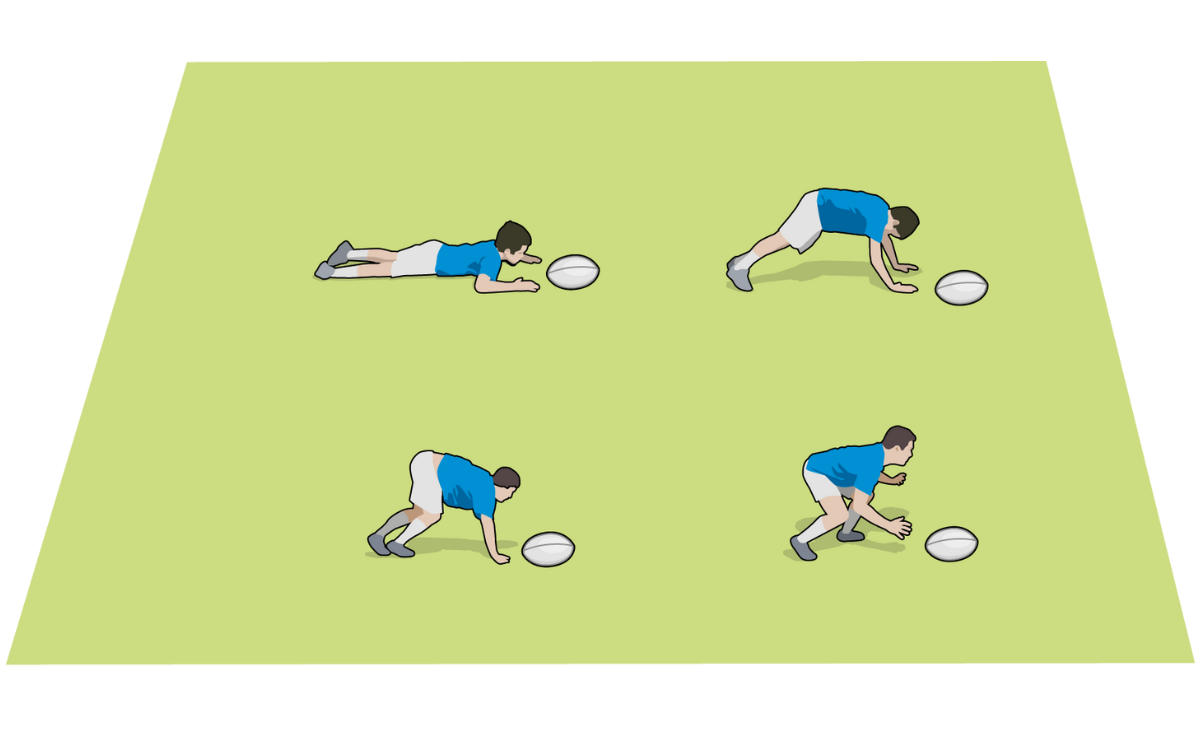Corners and arrows
Running lines like corners and arrows improves angles and timing of players’ runs but it needs a certain level of understanding of passing and moving.
WHY USE IT
The corners are sharp angles; arrows are straight. The player who turns the corner does so at the tackle line and should be able to see who to pass to.
set up
Cones and balls, plus four ruck pads for the game situation.
HOW TO PLAY
ACTIVITY: One player starts opposite a gate. They run towards it, take a pass, turn the corner indicated by the cones and pass to another player, who has to run either a straight line or two sides of a triangle. The key is the second player’s pace on to the ball. Develop this exercise by switching the sides to pass to and then taking away the cones.
DEVELOPMENT: Add another attacking option. Potential receivers must run an angle and change direction, running hard on to any pass. Develops communication, decision-making and timing of runs.
GAME SITUATION: Set up four ruck pad-holders 5m to 10m from a feeding player. An attacker runs through a gate, turns a corner and attacks the ruck pad-holders as they move forward to make contact. Three support players come through gates, after which they need to run angles. The aim is to find a gap between the ruck pad-holders or at least only take a slight glancing contact.
COACHING POINTS
- Attack the line with sharp turns and pace.
- Be prepared not to receive the ball, but still make the defence tackle you.
- A feeder passes to a receiver, who runs through a gate before turning a corner
- At the next gate, the ball carrier passes the ball
- The last receiver runs straight to take the pass at pace
Related Files
-
Operated as before, the passer has two options
- The two support players run different angles
-
Four ruck pad-holders come forward
- The passer has three options to pass to
- Three support players come forward
Newsletter Sign Up
Coaches Testimonials

Gerald Kearney, Downtown Las Vegas Soccer Club

Paul Butler, Florida, USA

Rick Shields, Springboro, USA

Tony Green, Pierrefonds Titans, Quebec, Canada
Subscribe Today
Be a more effective, more successful rugby coach
In a recent survey 89% of subscribers said Rugby Coach Weekly makes them more confident, 91% said Rugby Coach Weekly makes them a more effective coach and 93% said Rugby Coach Weekly makes them more inspired.
Get Weekly Inspiration
All the latest techniques and approaches
Rugby Coach Weekly offers proven and easy to use rugby drills, coaching sessions, practice plans, small-sided games, warm-ups, training tips and advice.
We've been at the cutting edge of rugby coaching since we launched in 2005, creating resources for the grassroots youth coach, following best practice from around the world and insights from the professional game.
